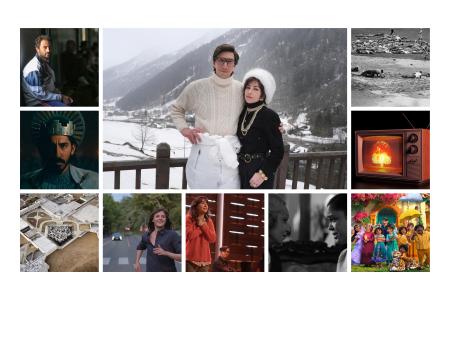2021 Top 10
The theatrical movie experience painfully went away in 2020, and it painfully returned in 2021.
Part of what made it so was the realization that I did not miss it as much as I thought I would. My teaching job became more time-consuming and stressful as masked students came in and out of class intermittently interrupted by the need to quarantine. COVID-19 shattered some people’s lives, but it touched everyone to one degree or another. I started looking backward, finishing my latest book and watching more selectively. It turns out that hopping off the treadmill of preview-Tuesday-review-Friday was a bit of a relief. I had already decided to take a step back from governing the North Carolina Film Critics Association, and the rise of Filmfest 919 in Chapel Hill made my annual trip to Toronto at the beginning of a new academic year increasingly hard to justify.
Binding together these threads of ambivalence was a scary reassessment that needed to happen. Since I was no longer getting paid to go to the movies, I had to think about when I wanted to go to the movies. I have always been upfront, I hope, about these lists being my personal favorites and not an objective assessment of the “best” films in some formal sense. I wanted (and found) less overblown spectacle (that includes you, Peter Parker) and more uplift. I preferred truth as I felt it — even painful truth — to diversions and distractions. Documentaries faired well this year, which is not surprising given the more focused and modest nature of such productions. Some films that I had muted initial responses to grew in my estimation, while others made a flashy first impact but did not retain my enthusiasm.
Here are the films that gradually fanned back into flame my love of movies:
10) CODA — Sian Heder
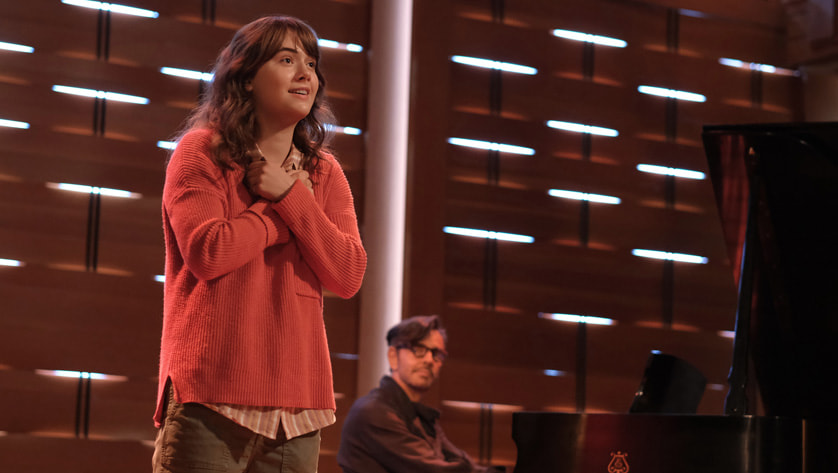
CODA is one of several films on my list that shows young people struggling to carve out or create a normal existence in the midst of circumstances that can and do overwhelm many of their peers and elders.
The acronym stands for Children of Deaf Adults, and the protagonist is played by Emilia Jones. As the only hearing member of her family, Ruby Rossi is a full-time interpreter for her deaf parents. She gradually discovers a love of singing, but the commitment to her new passion means time away from her family and some hefty amounts of guilt.
The plot is a bit predictable at times, but I appreciated CODA’s willingness to show the family as functional but less than perfect. Ruby’s mom, played by Marlee Matlin, lays some heavy guilt on her daughter, and her deaf brother (Daniel Durant) resents his younger sibling’s place of prominence in the family. The material borders on melodrama, but the film is propelled by some absolutely stellar performances, including Jones’s and that of Troy Kotsur as her dad. The film is available to stream on Apple+.
9) Encanto — Jared Bush; Byron Howard; Charise Castro Smith
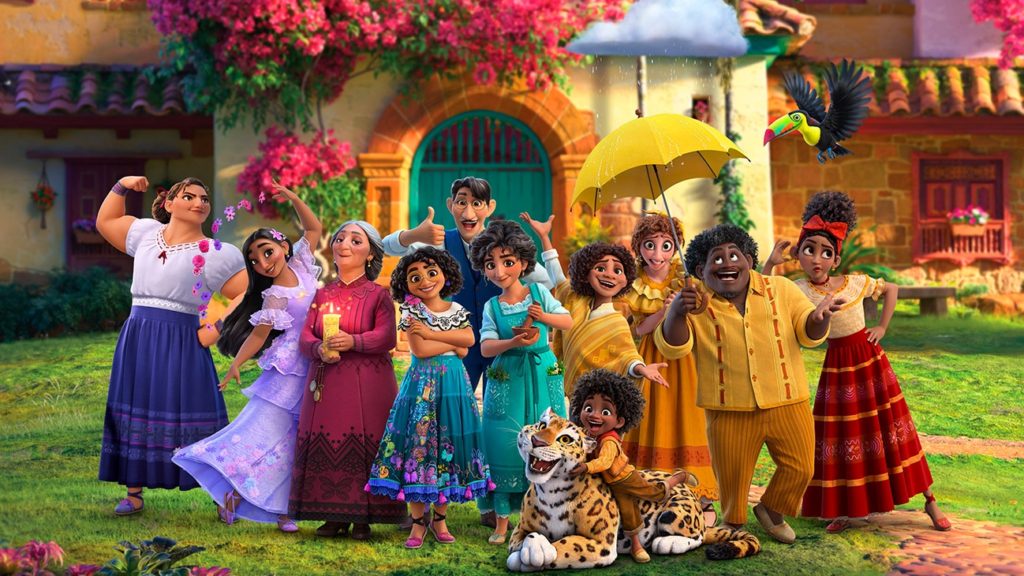
Another film about a young, female protagonist navigating the perils of a family that insists on projecting perfection to the outside world. I’m a bit tired of the Pixar formula, but at least Mirabel doesn’t utter the seemingly obligatory Disney princess line, “it’s all my fault!” Mirabel’s abuela seems to think the family’s loss of magic is her granddaughter’s fault since she is the only one not to receive an enchanted gift upon her coming of age. Mirabel’s siblings, each seemingly blessed with some great power, are too scared of losing their privileged status to share the burdens that their gifts come with, so Mirabel’s attempts to “save” her family are both literal and psychological.
The story is thin, but the musical contributions from Lin Manuel Miranda are genuinely emotional. Mirabel’s super-strong sister, Luisa sings “Under the Surface,” and it includes the question, “Who am I if I can’t carry it all?” When Mirabel says, “I think your carrying way too much,” there is just a glimpse of relief from Luisa and a hug. The family will have to fall apart even more before it can be put back together, but the healing has already begun. Loving unconditionally starts with seeing the other person.
Also, Mirabel has a fearlessness that is quite winsome. Because (in her mind) the worst thing has already happened, she doesn’t have to spend ever-increasing resources to maintain the facade of perfection. There is a truth here that is unpopular but undeniable; success, rather than emboldening us, sometimes paralyzes us. Those who have less to lose sometimes fear daring greatly.
8) Television Event — Jeff Daniels
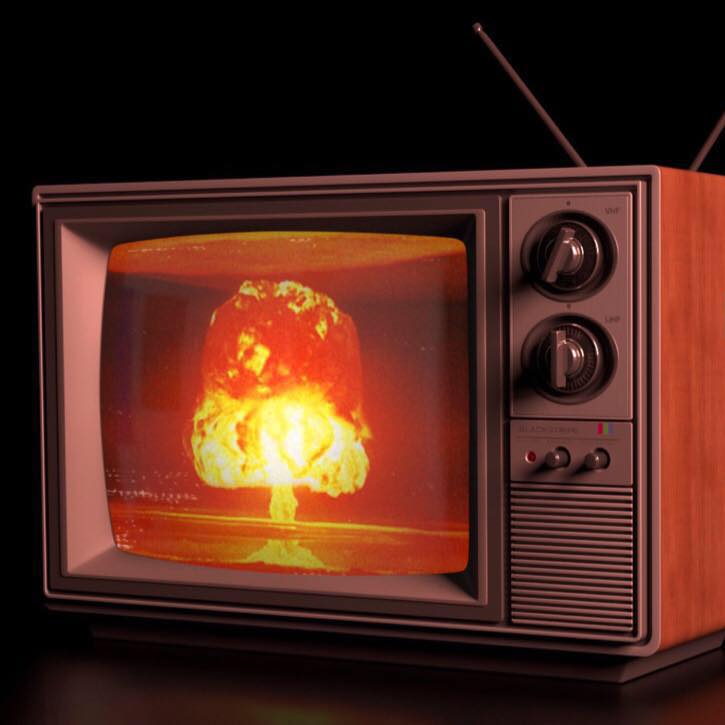
I once asked an award-winning actress at a press junket when she knew a move was going to work. She surprised me by saying it was not until she actually saw the finished product on the screen. Art process documentaries are fascinating to me because they continually reaffirm the truth that any collaborative endeavor that succeeds is a unique blend of vision and circumstances, preparation, and dumb luck.
I didn’t watch The Day After when it aired on network television, but I was enthralled by Jeff Daniels’ careful chronicle of its conception, production, execution, and aftermatch. What was unexpectedly timely about Television Event was the conviction communicated by many of the participants even in the face of serious global problems, art still matters. In the face of nuclear proliferation, global climate change, or pandemics, it sounds pretentious to say one is making a movie in the hopes of changing the world. Yet it sounds more pretentious and entitled to say one cares not about such things, for what then is entertainment other than something to distract us in the fleeting moments between when our ship hits the iceberg and when it actually sinks? This theme propelled Netflix’s more heralded Don’t Look Up, but that film tried so tirelessly and relentlessly to scold us for not listening to it that it forgot to forge a powerful work of art for those who were attending.
7) The Worst Person in the World — Joachim Trier
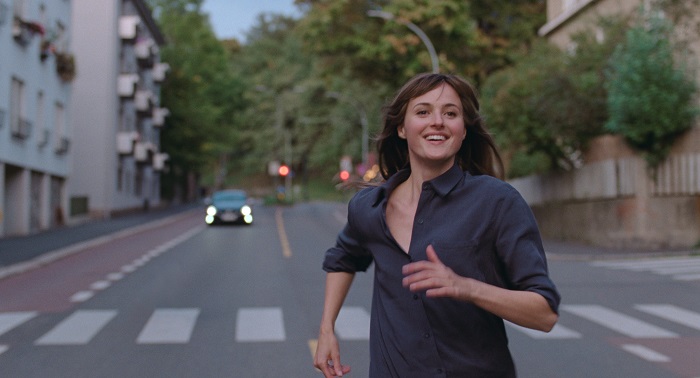
On paper, The Worst Person in the World sounded like a drag. Pouty twenty-something who can’t find her niche in life. But I kept hearing good buzz about the film coming out of Filmfest 919, and boy was I wrong. It’s been over a decade now since Scott Pilgrim famously whined the immortal line, “Why does everything have to be so hard?” I’ve spent some portion of that time wondering why the laments of young adults sometimes engender empathy and compassion and other times engender impatience. It is perhaps easier to sympathize with kids through their teen years, but at a certain point we want our put-upon heroes to get on with the business of growing up … whether they’ve had subprime mortgage meltdowns or pandemics to hurt them or not.
Stories that feature potentially unlikeable leads with whom you are meant to empathize require confident, fearless performances, and Renate Reinsve delivers here in a big way. Were I granted the power to unilaterally give one award per season, I’d give her a Best Actress nod over the more heralded competition. For example, in the third chapter, about cheating, Julie (Reinsve) plays a seduction game with a stranger she meets at a party she crashes. The extended sequence requires Reinsve to convey that Julie simultaneously knows what she is doing and is carried away, that she is driven to desperation by her sadness and loneliness but is still clinging to something that makes her realize that excitement is a poor substitute for joy — or even contentment.
6) The Green Knight — David Lowery
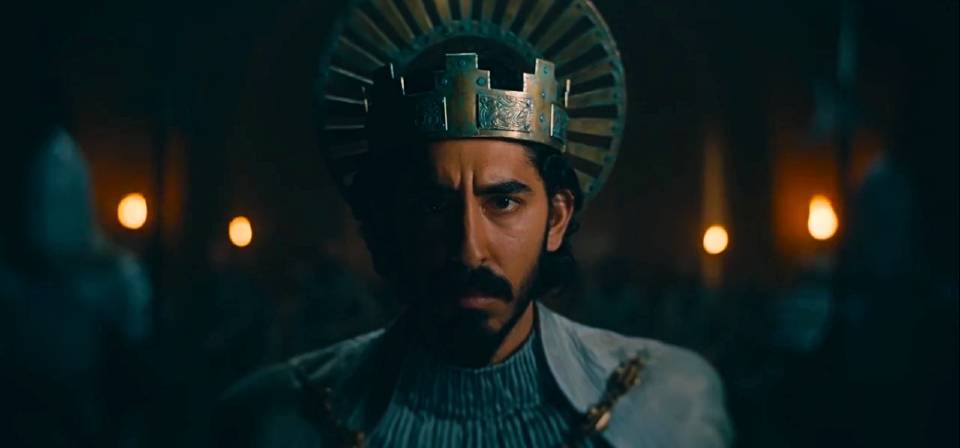
When I first saw trailers for The Green Knight, my reaction was that deliciously simultaneous experience of “no way!” and “of course!” It is a quiet movie, and those who have seen Lowery’s A Ghost Story may be well prepared for a film that demands your careful attention. My big question regarding the film — whether it would work for those who don’t know the poem — is as unanswerable as the inscrutable narrative itself.
But oh my goodness is this a beautiful film. Too often the age of chivalry is portrayed as overly dark (everyone covered in mud) or overly bright (with people wearing tailored costumes and impeccable makeup). This is a world that feels…lived in. That may seem like an odd thing to say about a movie that has giants and talking foxes and decapitated heads that continue to speak, but as anyone who knows me can tell you, I much prefer that matter-of-fact depiction of the miraculous to the self-consciously effects-driven cinematic miracles of more commercial entertainment.
I have wondered when we were going to collectively wake up and realize how good Dev Patel really is. The casting here is perfect, as Patel’s persona practically radiates aspirational nobility. I am not sure I liked the timing and editing of the final scene(s), as I think they may tip the delicate balance between ambiguity and gimmick. But if that’s your only complaint, the film will grate a little on first viewing and grow richer once you are free to scrutinize what it is saying instead of how it says it.
5) Passing — Rebecca Hall
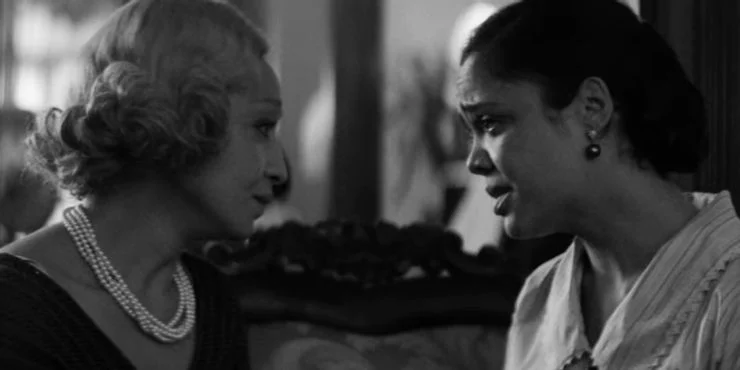
Just as we may think (based on movies) that all people who lived in the middle ages were cold, hungry, and perpetually unwashed, so too might we fall prey to the stereotype that all African-Americans before the 1960s lived in ghettos and performed manual labor. We’ve had more films in recent years about the exterior lives of African-Americans, and that’s a good thing, but there has been, perhaps, a reluctance to allow the characters to have interior lives. Rebecca Hall’s lush adaptation of Nella Larsen’s novella tells us of the friendship of two African-American women, one of whom (Ruth Negga) passes as White.
The story begins with Irene passing momentarily in a store — she doesn’t actively present herself as White but neither does she correct the assumption of the clerk who reads her clothing, demeanor, and complexion and comes to her own conclusions. When she encounters a previous acquaintance who is more brazenly passing, we expect the film to rather bluntly compare the women’s situation. If passing is something we all do to one degree or another, is there a difference in kind between the choices the women make? If not, why is Irene discomfited by Clare when the latter is the more ostensibly vulnerable.
In an efficient 98 minutes, the film keeps upping the ante, adding variations to the same theme in order to show that we all pretend at times to be what we are not and confront us with the opportunity to compare our reasons for pretending to those of others who may be more like us than we would admit at first glance.
4) A Hero — Asghar Farhadi
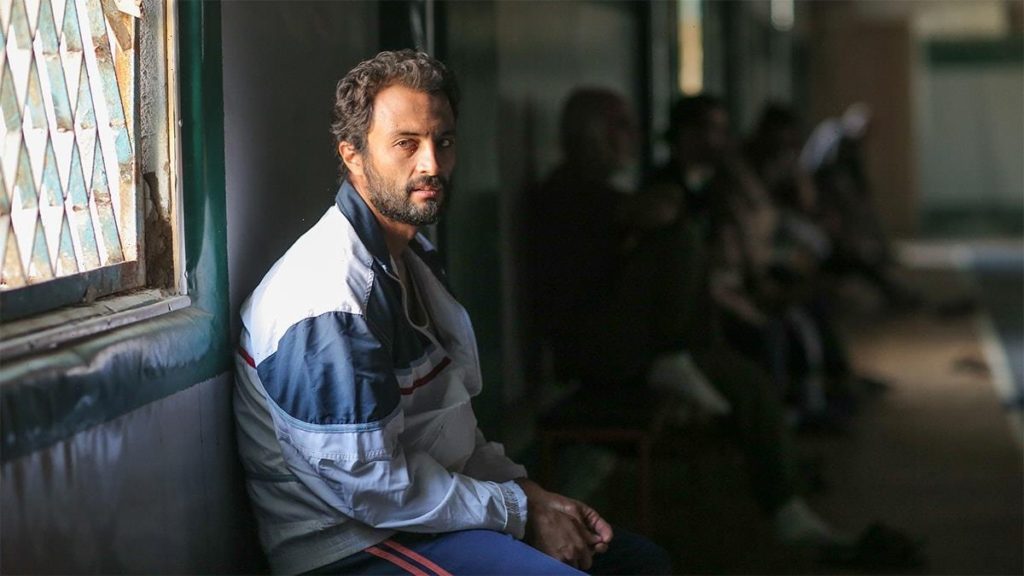
I have written more than I want to over the last decade about the so-called “Christian” film production. I have come to the conclusion in the last year, that what American evangelicals need is a Christian version of Asghar Farhadi — someone capable of depicting his (or her) culture’s problems honestly and honestly including the contributions that organized religion make towards creating and sustaining those problems.
I am not quite sure how he does it. Like A Separation and About Elly, A Hero is a mousetrap of a movie. The main character is on leave from a debtor’s prison. He is decent, though a strict application of the law (civic or religious) would disagree. That’s the point, I think. There is no just man, not one, and if this is how your worldview treats the man who is trying to be good, what conclusion are we left with other than that institutions and structures are made to privilege the rich and powerful. Might really does make right.
Another thing that is interesting about Farhardi’s films is that the put-upon characters are not surrounded by stock, flat, emblems of good or evil. People are willing to help, up to a point. Authority is more lazy or exhausted than genuinely corrupt. The rhetoric of justice is set against the impulse for compassion rather than being tempered by it. It is a mark of Farhadi’s careful attention to character development that we continue to root for his character’s to make it through trials even as we recognize with growing frustration the way all the forces of society are stacked against them. What a frail thing is freedom, reputation, happiness. Farhadi gives us a portrait of people living close to the abyss, trying not to fall, and increasingly afraid to offer a hand to another less the least knew burden becomes a final weight that causes them to buckle.
3) Attica — Stanley Nelson
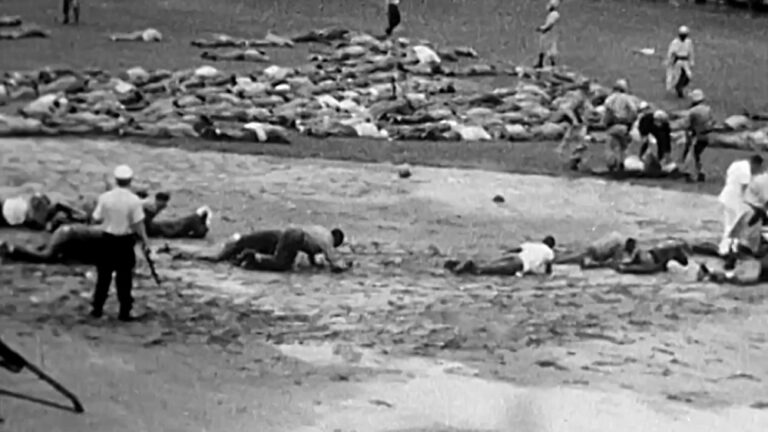
So many of the changes in American society since 2016 must feel unprecedented to the liberal White, straight, male. Yet perhaps part of confronting privilege is naming it and thinking accurately about it. If we wonder why oppressed people do not revolt more often, perhaps it is because we forget power’s tendency to meet resistance with straight-up brutality as a means of sending a message to onlookers who might be inspired by protestors to act similarly.
The fact that Attica is a documentary about actual events contributes to but is not the sole reason for the feeling that the end is inevitable. If you know even a little of America’s history in the 19th and 20th centuries, its impossible to not be afraid for these men — as afraid as you are for Bigger Thomas stumbling into the room of a drunken Mary Dalton. They’ve crossed into a place where their intentions don’t matter; all society can care about is its own fear of them.
But that raises the question, why did they go there. These are smart men. Surely they knew? Did they think it could be different? Ask that question and perhaps you can see that Yeats’s famous claim that too long a sacrifice makes a stone of the heart applies racially and not just nationally. These men understood that they didn’t stumble into a region of life where their motives didn’t matter; they were born into a life where those motives were never a factor.
Attica is a hard movie to watch. Some of the pictures, some of the frank accounts of the treatment of the prisoners, is heartbreaking. But Stanley Nelson also includes footage of the families of the guards who were killed, and much like the presence of the grieving families in Dead Man Walking keeps you from whitewashing the sins of the killer, the presence of these members pushes viewers to see White and Black as victims both of systemic violence and oppression. It is one thing to know that intellectually, it is another to look it in the eye, to hear people recount being stripped, sodomized, tortured, beaten, starved.
I have little doubt in this day and age that someone, somewhere is reading this and saying, “Well what were they in prison for?” or “You want me on that wall…you need me on that wall.” I don’t think Attica glorifies the prisoners, but it does humanize them. That is, it presents them as human beings. And is it really such a controversial notion to suggest that dehumanizing others is (at times and for some) a deliberate strategy intended to provoke rebellion so that it can be met with violence that claims to be (or genuinely is) protecting the innocent rather than only just the interests of the powerful?
2) Paper & Glue — JR

I’ve reviewed this film already, so I won’t repeat myself too much here. This film is the flip side of Attica. People from either side of a border fence share a meal. Inmates and guards work in tandem to create a portrait of beauty on the floor of a prison courtyard. An artist gets the permission of drug lords to navigate slums in order to pasted portraits on walls.
Paper & Glue is fairly high up on the list not because of some artistic or formal creativity but rather for the emotions it sparked. Perhaps no problems of substance will be solved by JR handing out cameras to street urchins and making installments out of the snapshots they take, but his curiosity is infectious, and he makes you believe that people have reservoirs of compassion and creativity and decency just below the surface, accessible to all those who dare to ask.
He asks. The results are inspiring…and we could all use a little inspiration these days, right?
1 ) House of Gucci — Ridley Scott

Hell is other people says the famous line from Sartre’s No Exit.
But it’s not.
It’s our grubby, selfish, arrogant selves. Our selves freed of all restraint, incentivized to overestimate our ability to resist the temptations that ensnare others and underestimate our willingness to compromise what we have thought sacrosanct.
House of Gucci was the biggest surprise of the year because I knew little about the subjects and cared less. Yet it creates a heart-breaking portrait of indviduals who go to hell incrementally rather than all at once, little compromise by little compromise, until the they no longer recognize what are their principles and what are their compromises.
If that summary sounds famliar, it is by design. I’ve used it to describe my all-time favorite film, The Godfather. Scott’s film follows the same basic structure as Coppola’s. The youngest son has little interest in what his family does yet gradually becomes immersed in its operations. He thinks because he does not care about the family business he is impervious to the lifestyle that the business provides, and he may even be right … for a while.
While the moral slide of a likable protagonist is a familiar enough structure, the film also paints on a larger scale, using the decline of the Gucci family to invite comparisons between the modern, capitalist mindset and the artisinal one. While the former devours the latter, it is hardly a hostile takeover. And something important is lost, the movie suggests, something that all the money in the world can’t create, can only buy — but something it kills in the act of acquiring.
One of the lines that is repeated often by the Gucci’s when an outsider comments on some million dollar painting they are displaying is that “art has no price.” It is said first by the father and then by the son. And you know what? I think both mean it when they say it — a sign of just how good Jeremy Irons and Adam Driver are in their respective roles. But of course, money is of no object only to those who have it; that’s the point.
But it’s not the whole point.
Perhaps the youngest Gucci would have been content to wash trucks and live in a modest apartment with his beautiful wife and no money, but she hardly needs to push him too hard to reconnect with his family. Like a modern-day pair of Macbeths, they nudged each other further down the path of corruption, each willing to go a little farther than either of them might have gone on their own. Perhaps hell is other people — other people who encourage you to be the worst version of yourself.
Nobody comes out looking good in this movie, and that’s usually a deal-breaker for me. But there is catharsis here in every sense of the word. Fear and loathing harden our hards but maybe they scare us — the genius of this film and The Godfather both is to make us feel in our bones how very easy it is to go to hell passively. One hardly needs to do anything at all, and for the little one does do, one can blame circumstances, bad luck, one’s sons or spouses or fortune-tellers. And maybe even there is a small comfort in seeing those oblivious to the struggles of normal people face their own. Schadenfreude is a very real thing.
Just be careful not to drink too deep from the glass with which you toast their downfall. Maybe the super-rich are not so very different from me and you after all…

